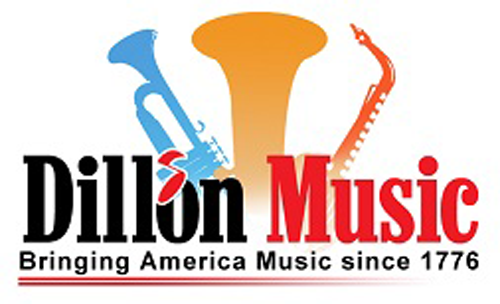What is a Brass Band?
Based on notes compiled by Major Thomas H. Palmatier, Former President, North American Brass Band Association
Standard Brass Band Instrumentation
1 E-flat Soprano Cornet sits on the end of the 2nd row on the left. Serves as the piccolo voice, requires a delicate touch, and is used frequently as a soloist or to add brightness to the cornet tutti sound.
4 B-flat Solo Cornets sit in the front row on the left. The lead voices in the ensemble, the use of four permits players to switch off on parts that are frequently continuous throughout the whole piece. Divided parts are also frequent.
1 B-flat Repiano Cornet sits in the back row next to the soprano cornet. The "roving" player of the cornet section, it is often used as a solo voice, or doubling the E-flat Soprano Cornet in unison or at the octave, or to add weight to the other cornet parts.
2 B-flat Second Cornets and 2 B-flat Third Cornets sit in the back row to the left and fill out the cornet choir.
1 B-flat Flugel Horn sits in the front row and serves as a bridge between the cornets and the horns. It is a frequent solo voice and is often used as the top voice in the horn family.
3 E-flat Tenor Horns sit in the front row directly in front of the conductor. The three parts (Solo, First and Second) often perform as a choir with the flugel horn and the baritones. The solo horn is a frequent solo voice. Also commonly referred to as the alto horn in the United States, it is an upright, three-valve instrument with a lighter sound than the french horn.
2 B-flat Baritones sit in the front row on the right. They are often doubled with the euphoniums but work best as lower extensions of the horn section. As separate voices, their ability to blend and add a middle-low voice without heavinesss is a unique feature of the brass band.
2 B-flat Euphoniums sit in the front row on the right, and are the predominant solo tenor voices and function as tutti reinforcers with the basses.
2 B-flat Tenor Trombones sit in the back row on the right and provide "punch" and drive because of their cylindrical construction.
1 Bass Trombone is both a low support for the trombone section and adds additional weight to the basses. It is the only instrument in the brass band that reads concert pitch.
2 E-flat Basses and 2 B-flat Basses (Tubas) sit in the back row center. Four basses give composers an extraordinary flexibility in dictating the sound of the bass part. The lighter quality of the E-flat basses can have all the lyricism of the euphoniums while the "fatter" B-flat Bass sound adds weight. In octaves or fifths, the section can give the brass band an incredible richness of tone.
3 Percussionists cover the entire spectrum of percussion instruments. Timpani, battery, and mallets are the most common for almost all compositions.



